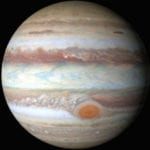 History
History  History
History  Technology
Technology Top 10 Everyday Tech Buzzwords That Hide a Darker Past
 Humans
Humans 10 Everyday Human Behaviors That Are Actually Survival Instincts
 Animals
Animals 10 Animals That Humiliated and Harmed Historical Leaders
 History
History 10 Most Influential Protests in Modern History
 Creepy
Creepy 10 More Representations of Death from Myth, Legend, and Folktale
 Technology
Technology 10 Scientific Breakthroughs of 2025 That’ll Change Everything
 Our World
Our World 10 Ways Icelandic Culture Makes Other Countries Look Boring
 Misconceptions
Misconceptions 10 Common Misconceptions About the Victorian Era
 Mysteries
Mysteries 10 Strange Unexplained Mysteries of 2025
 History
History 10 Things You Didn’t Know About the American National Anthem
 Technology
Technology Top 10 Everyday Tech Buzzwords That Hide a Darker Past
 Humans
Humans 10 Everyday Human Behaviors That Are Actually Survival Instincts
Who's Behind Listverse?

Jamie Frater
Head Editor
Jamie founded Listverse due to an insatiable desire to share fascinating, obscure, and bizarre facts. He has been a guest speaker on numerous national radio and television stations and is a five time published author.
More About Us Animals
Animals 10 Animals That Humiliated and Harmed Historical Leaders
 History
History 10 Most Influential Protests in Modern History
 Creepy
Creepy 10 More Representations of Death from Myth, Legend, and Folktale
 Technology
Technology 10 Scientific Breakthroughs of 2025 That’ll Change Everything
 Our World
Our World 10 Ways Icelandic Culture Makes Other Countries Look Boring
 Misconceptions
Misconceptions 10 Common Misconceptions About the Victorian Era
 Mysteries
Mysteries 10 Strange Unexplained Mysteries of 2025
Top 10 Incredible Sounds
I think sounds are always underrated. There are plenty of famous pictures, graphs, and movies out there, but for a sound itself to be famous (other than music), or to even really be that interesting, takes something special. So here’s some strange sounds – some may be familiar, hopefully others won’t be – but all are definitely incredible.
The “Slow Down” is a sound that was first recorded on 29 May 1997, on an autonomous hydrophone array in the Equatorial Pacific, coming from a southerly direction. It lasted about 7 minutes, and has been recorded several times every year since it was first detected. In 2002, it was suggested that the sounds could be caused by the friction of ice in Antarctica moving over the land, as the spectrogram of the sound is very similar to the sound of two objects rubbing together – if you rub your fingers along a table, record the sound, and slow it down (as the scientist who proposed it did) you end up with a strikingly similar sound. However, the matter has not been conclusively settled.
A similar sound is the “Upsweep“, a sound detected between 1991 and 1994, which consists of several consecutive rising sounds. Its cause is also unknown, but it is thought to be caused by some underground volcanic activity, such as the release of underwater gas or lava.
Singing Sand dunes are a phenomenon found in about thirty places around the world. When different layers of sand rub against each other, pushed by the wind, or someone walking on it, it creates a deep booming sound. Ongoing investigations have found that the sound depends on the sand having particular characteristics, such as size and humidity, to make the sound. As a result of different types of sand, different sand dunes produce different notes – Sand Mountain in Nevada gives a low C, Mar de Dunas in Chile gives an F, and the sands of Ghord Lahmar in Morocco give a G sharp.
The above recording was made on 27 June 1996. It was made by the Galileo spacecraft as it passed Ganymede, a moon of Jupiter. An antenna on the spacecraft was picking up plasma waves, created by the unusually strong magnetosphere of Ganymede (about 3 times stronger Mercury). This was used to create an audio signal (above, the 45 minute signal is compressed into about 60 seconds), where the sound frequency corresponds to the frequency of the waves detected. At about 8 seconds in, Galileo enters the magnetosphere (there is a sudden increase in noise, sounding like a clap of thunder). As the spacecraft passed through the magnetosphere, the noise rose in pitch to peak, then decreased again. The irregularities in the recording, such as the sudden drop in volume at 15 seconds, are caused by irregularities in the magnetosphere of Ganymede as it passes through the influence of the immense magnetic field of Jupiter.
In 1967, Jocelyn Burnell discovered a source of pulsed emissions of radio waves which she described as sounding like an “idling truck” on the radio telescope, as it had a frequency of just over 1 Hz, about the same as a large idling diesel engine. A few theories were proposed as to the source of these emissions, including that they were coming from extra-terrestrials, because the pulses were so regular (they are more reliable than atomic clocks), leading to the first pulsar being called LGM-1 (standing for Little Green Men). However in 1968 they were shown to be coming from rotating neutron stars, which only emit radiation along one axis, so we only see the radiation when it points our way. In 1974, Antony Hewish, who had worked with Burnell as her doctoral advisor at the time, received a Nobel Prize for discovering pulsars, while Burnell did not – a decision that received much criticism from fellow scientists. Above is a recording of the Vela Pulsar, a pulsar with a period of 89ms, the shortest known at the time of discovery. The current fastest known pulsar spins once every 1.3ms, so fast that at the equator of the star travels at 24% the speed of light.
The lightning pop, or pip, or vip, or any number of words that have been used to describe it, is a sound that can be heard preceding the normal thunder associated with a lightning strike. It is heard if you are fairly close to the lightning, and is believed to be caused by an electrical discharge of nearby metal objects as the electric field immediately intensifies with the lightning strike. Above is the only recording I could find with a lightning “pop” – the cameraman was standing near a metal power line (he clearly knows his stuff about lightning), which was possibly where the sound of the discharge came from. It should be noted that the “pop” is not simply an artifact on the microphone, as people report hearing this sound with their own ears.
Whistlers are low frequency radio waves that are detected on radio receivers. Lightning strikes create radio waves, which then travel along the earths magnetic field lines through the magnetosphere and ionosphere, meaning they can be detected far away from any actual thunderstorms. In the plasma of the upper atmosphere, higher frequencies of radio waves travel faster, so a receiver will pick up higher frequencies first, followed by lower frequencies in a descending tone. The radio waves occur at frequencies low enough such that they can be converted directly into sound through a speaker, where you can hear the characteristic “whistling” sound. They can be heard almost anywhere in the world. They have also been detected on Jupiter, showing lightning occurs there.
The above recording was made by the Voyager 2 on August 26, 1981, as it passed close to Saturn’s rings. How the sound was created is not as complicated as on other entries on this list – dust from the rings was hitting the radio antenna. Still, considering that the sound was made by a tiny probe, traveling at over 35,000 mph, through a ring of dust 144,000km wide and over 1.2 billion km away, it still seems slightly creepy.
Sonic booms are created as an aircraft breaks the sound barrier, at around 761 mph. As an aircraft travels along, it creates a series of pressure waves in front and behind the aircraft, which themselves travel at the speed of sound. When the aircraft reaches the speed of sound, these pressure waves cannot travel away from each other and collapse into a huge shock wave. This in fact results in two sonic booms – one at the front of the aircraft, and one at the back shortly afterwards. The two sonic booms can be heard quite clearly on the video above. The ThrustSSC, the first car to break the sound barrier, produced a similar double-sonic boom.
On a frozen lake, where the ice is quite thick, disturbances in the ice, such as the ice naturally freezing or moving, create sounds that reverberate to create a very unique sound. The sound can also be created by throwing stones onto a frozen lake. In the video above, if you turn your speakers up, you can hear this sound being produced (it is quite quiet). From further away, a lake that is freezing will sound like it is “singing”, as in this video.
The Superb Lyrebird is a songbird found in south-east Australia which impresses females not by creating its own impressive birdsong, as with other birds, but by accurately mimicking the songs of other birds. It has an incredible vocal range, and can mimic the calls of over 20 other birds, which are so accurate even the birds it is impersonating cannot tell the difference. What has made this bird famous, however, is how well it can imitate other sounds it hears, such as car alarms, chainsaws, car engines starting, drills, electric motors, and sometimes human voices. The only other bird to do this is the much rarer Albert’s Lyrebird, also found in south-east Australia. Above is a famous clip of a Superb Lyrebird from the David Attenborough documentary “The Life of Birds”.
I couldn’t really include this in the main list, as it has appeared in Yet Another 10 Unsolved Mysteries, but I thought people might find it interesting to hear what it sounds like. Alien or not, it is a creepy sound to listen to.








